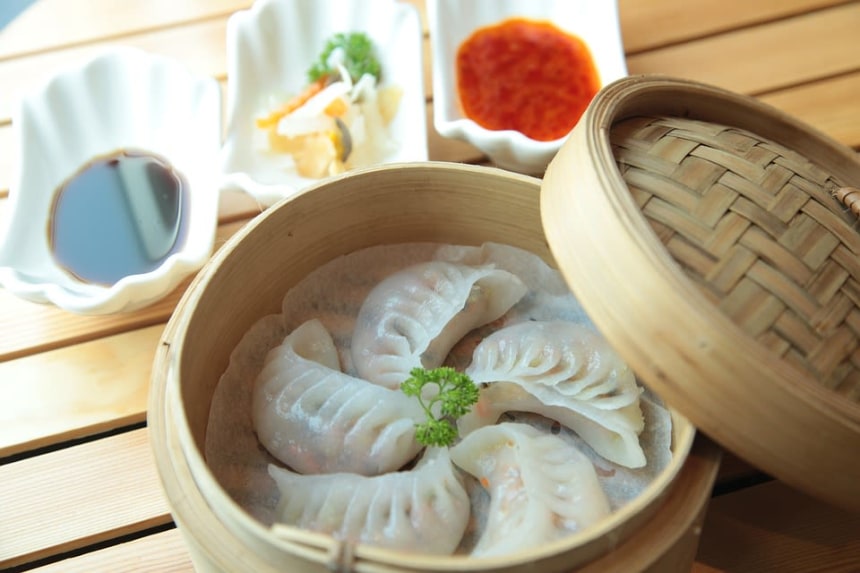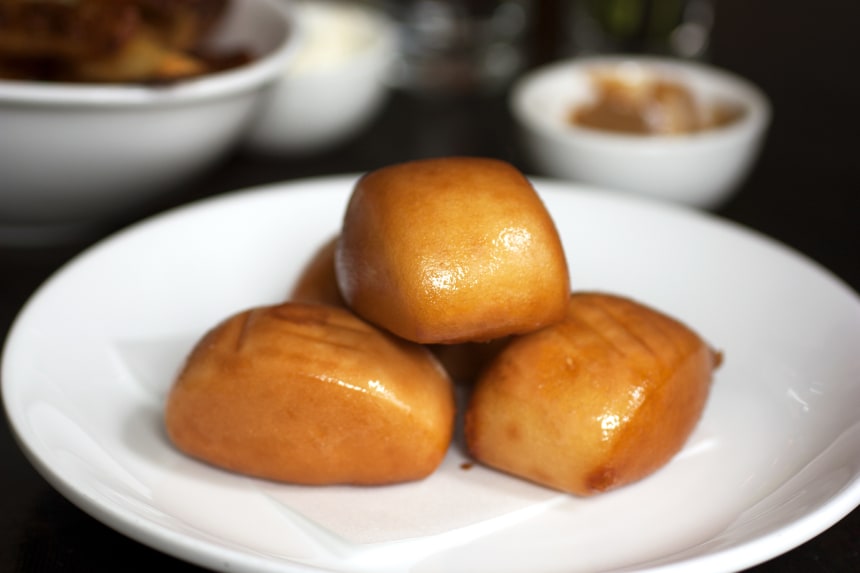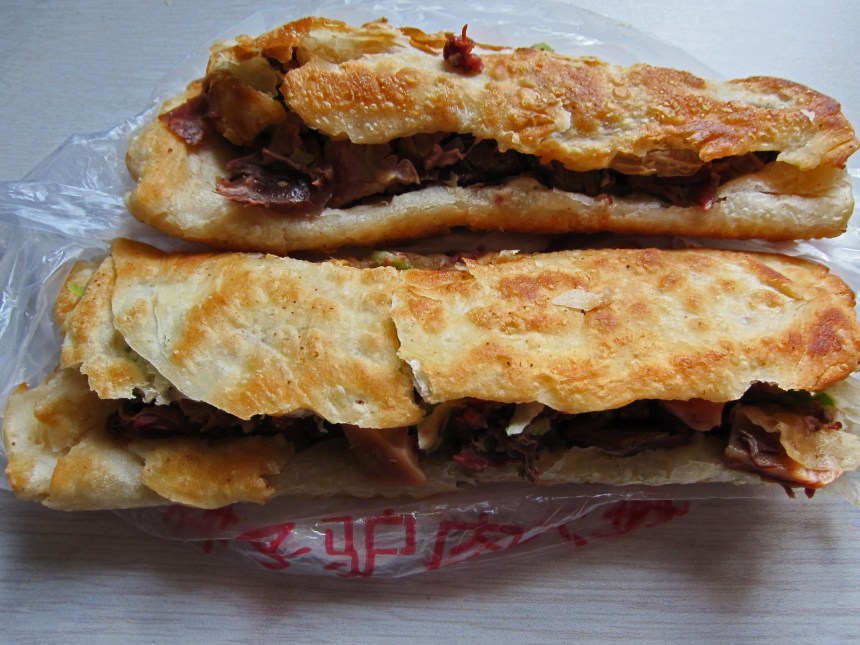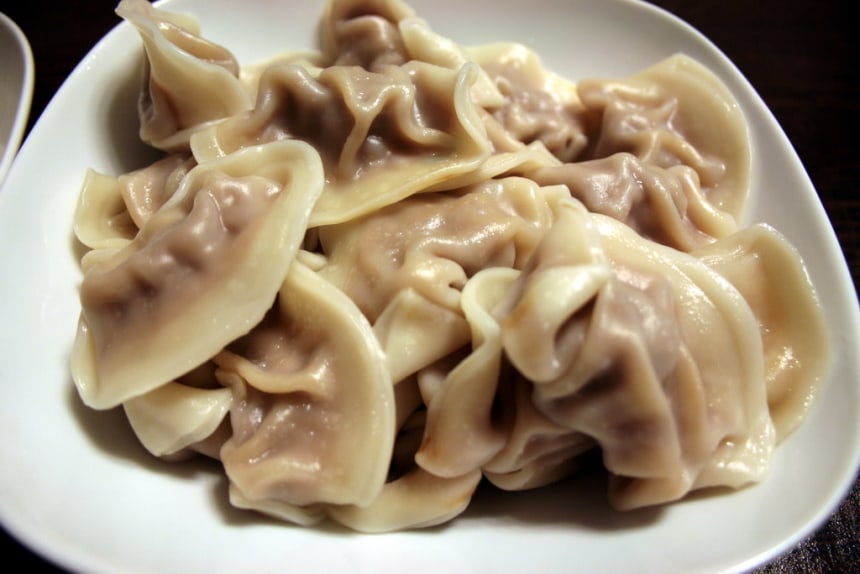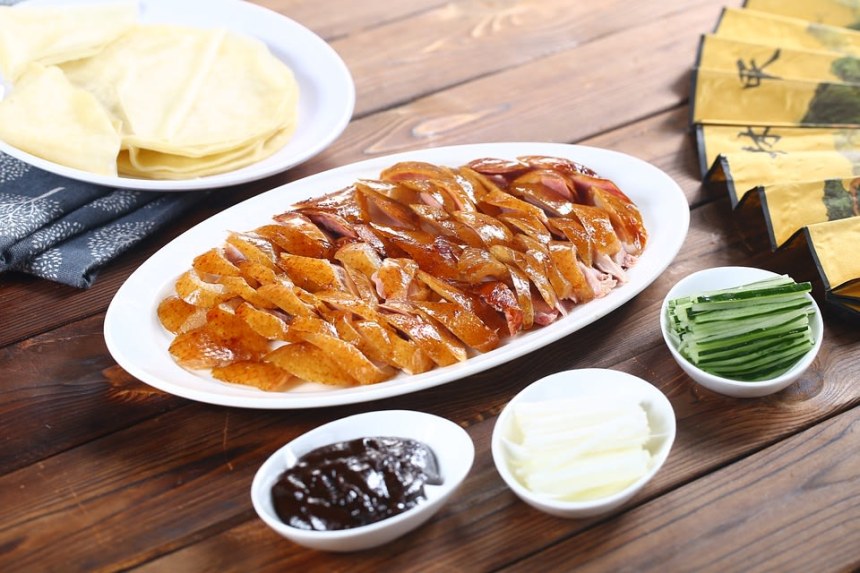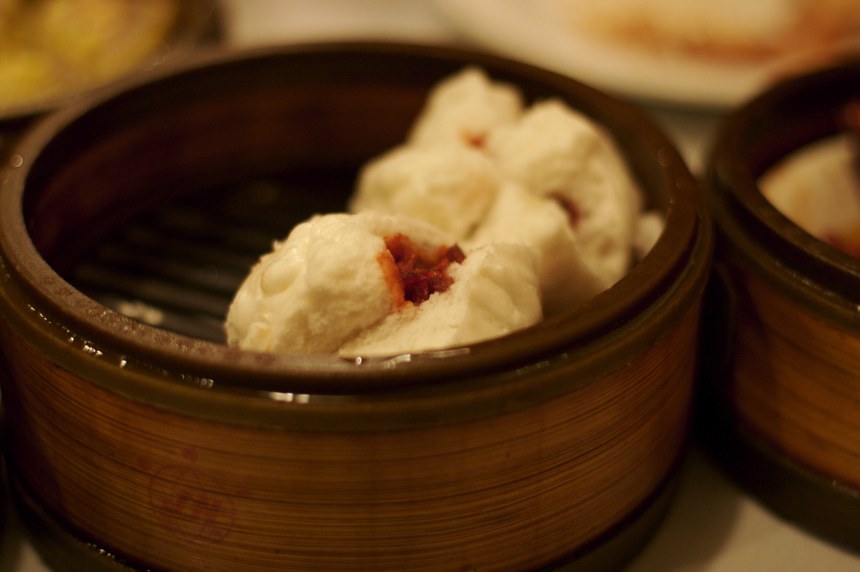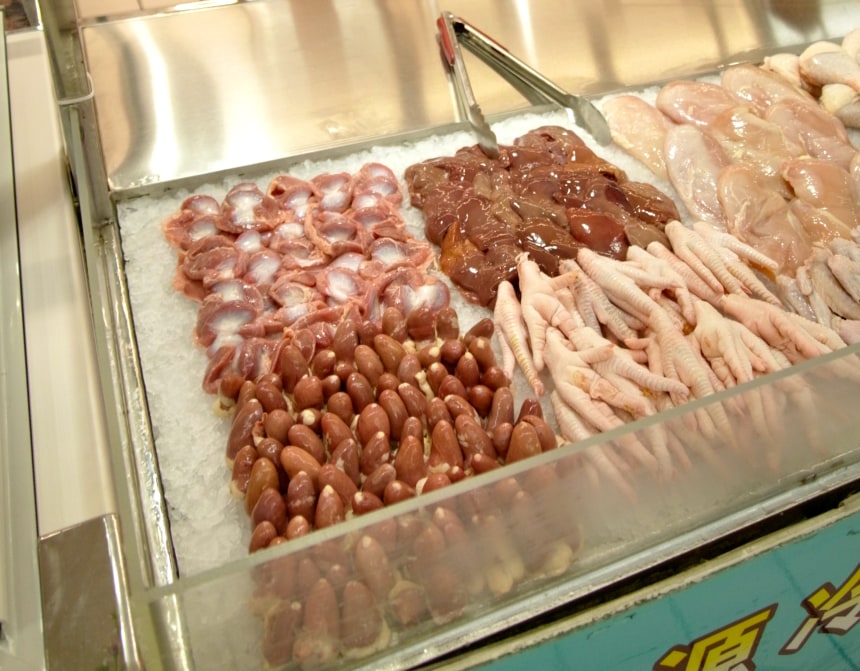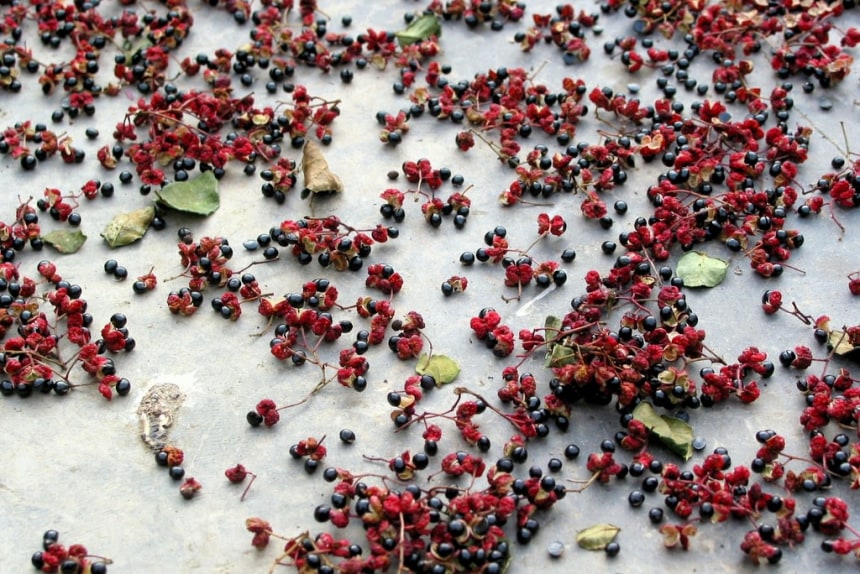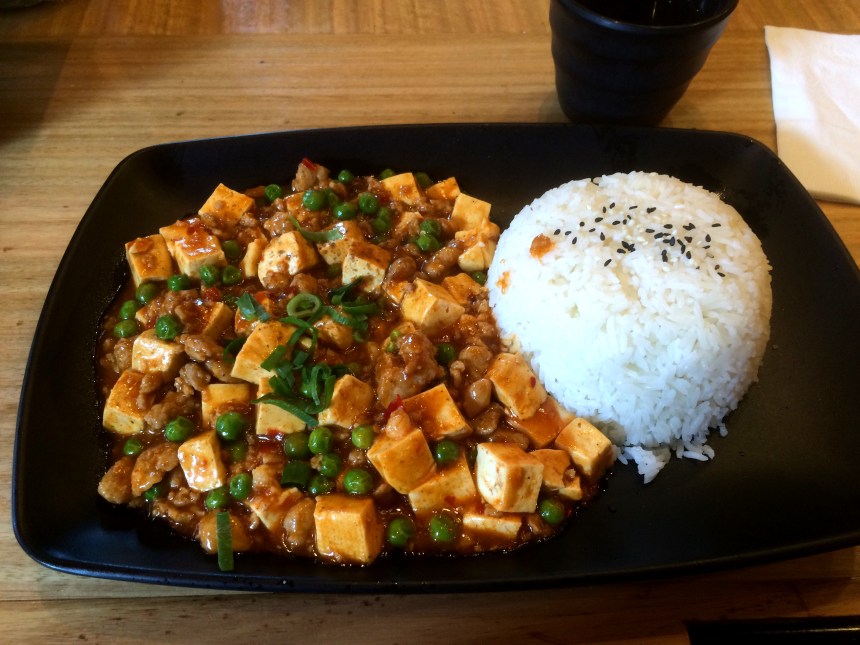| 11 mins read
Ross Cameron
Most people’s first experiences of Chinese culture – even if they have never visited China itself – likely come from food. Throughout the 19th century, Chinese immigrants set up Chinatowns across the globe from New York and San Francisco to London and Berlin that have been exciting Western taste buds ever since. However, the food that is most commonly found in these Chinese influenced areas of North American and European cities accounts for only a fraction of the vast country’s complex gastronomic traditions. More often than not, the food that is served up in Chinatown restaurants, like dim sum (steamed dumplings), cha siu (barbequed pork) and sweet and sour sauces, derives from China’s southeastern seaboard – as most Chinese immigrants came from the areas surrounding the trading cities of Canton (now Guangzhou), Hong Kong and Macau. Moreover, these dishes are often nothing like those served in their home country, as they have been carefully adapted due to the scarcity of traditional Chinese ingredients and to suit Western tastes.
In short, if you are planning on visiting China for the first time and are expecting to chow down on your favourite Chinatown classics then think again. One of the best ways to begin understanding Chinese cuisine is to grasp that there is no such thing as Chinese cuisine. The vast country is the size of Europe and just as Europe has a plethora of different regional and national cuisines so too does China. Indeed, the sheer diversity of China’s geography – from the Himalayan Tibetan plateau and the deserts of Xinjiang to the grasslands of Inner Mongolia and the tropical forests of Yunnan – ensures that no two provincial, regional and national cuisines are the same.
While all this may sound daunting for a traveller heading to China for the first time, fear not, as this gastronomic guide to China will show you the cuisine that characterises the northern, eastern, southern and western provinces. This guide will primarily focus on the eight different schools of cooking of the majority Han Chinese, which are: Sichuan; Anhui; Fujian; Shandong; Hunan; Jiangsu; Cantonese (Guangdong); and Zhejiang. China’s eight gastronomic traditions can be roughly split into four categories – northern, eastern, southern and western cuisines, each of which has its own distinct flavours. However, this guide will also suggest various famed dishes produced by China’s numerous minority groups that any traveller should try. Indeed, by the end, you will have no problem knowing your Sichuanese hot pots from the Middle Eastern infused cuisine of Xinjiang and the subtle and fresh flavours of Fujian.
Northern Chinese Cuisine: the nation’s decadent gastronomic heart
No guide to China’s culinary traditions could start anywhere else but the country’s northern heartlands. Rooted in the history of Shandong province’s cuisine, which is believed to be the oldest in China, Northern Chinese food has also been shaped by the imperial cooking of Beijing, which was the centre of the Yuan, Ming and Qing dynasties. Moreover, as the non-Han Manchurian Qing sat on the imperial throne from 1644 to 1911, it is in northern Chinese cooking that the influence of ethnic minorities is strongest with a mouth-watering array of roasted meats and suannai (yoghurts), both influenced by the traditions of nomadic Mongolians and Manchurians.
As Northern China is sometimes known as the ‘Chinese wheat belt’, it comes as no surprise that the region’s cuisine relies heavily on starchy foods. Mantou (steamed bread buns), bing (a fried flatbread), jiaozi (boiled or fried dumplings) and noodle dishes are ubiquitous – the latter of which are particularly notable in Xi’an province, which as the endpoint of the silk road sees noodles combined with unusual Turkic flavours. Moreover, this carbohydrate-heavy cuisine is well suited to the region’s climate, which can turn frigidly cold in winter.
The most traditional form of northern cuisine is from the Shandong province, which borders the Yellow Sea to the south of Beijing. This was one of the most advanced areas of China for centuries and the roots of Confucian and Taoist culture can be found in the province. It is no surprise then that this culturally rich region was one of the first to develop a distinct cuisine, which is best known for its distinctive bao stir fry method that entails cooking the food incredibly quickly over extreme heat. Through the bao method, Shandong cuisine preserves the original flavours of ingredients, commonly fish caught from the Yellow Sea, rather than masking them in sauces. The cuisine is also noted for its liberal use of salt and ginger, which creates a rich umami flavour.
While Shandong may be the original cuisine in Northern China, it has since been eclipsed by the popularity of the imperial style of cooking that originated in Beijing. Known for its rich flavours and luxurious ingredients, this cuisine was once confined to the walls of the Forbidden City. But in the 20th century imperial chefs, out of a job following the establishment of the Republic of China, began opening their own restaurants.
The cuisine’s most popular dish is undoubtedly Peking Duck, which is unlike any found in a Western Chinatown. Roasted over fruit-tree wood till extra-crispy and then served with fermented bean paste, spring onions and filling pancakes, it is one of China’s most decadent dishes.
Southern Chinese Cuisine: home of some of the world’s freshest produce
Before arriving in China, the country’s southern cuisine, which is defined by Cantonese cooking, will likely be your gastronomic touchstone. Without the rich saltiness that gives Northern Chinese cuisine its distinct flavour, southern chefs like to boast that their cooking is known for its xian, which means natural freshness. In this way, do not expect too much extra flavouring in southern cooking, and instead, focus on the quality and freshness of this region’s astounding produce. Moreover, with its seemingly endless fields of rice paddies, southern cooking has less bread than its northern counterpart.
Cantonese cooking in China is far removed from the Cantonese found in most Chinese restaurants back home. The cuisine’s most iconic dish is, of course, dim sum, which are served in luxurious teahouses and are often wheeled around the room on trolleys for you to take your pick. Well-known dim sum include chashaobao (steamed pork buns), chunjuan (crispy spring rolls), fengzhua (fried chicken feet) and Macau egg tarts (the origins of which lie in the Portuguese pastel de nata).
Beyond the ever-popular Cantonese cuisine, Fujian province, which contains some of China’s most dramatic coastline and rich fisheries, is renowned for its saltwater fish, which are often cooked in delicate broths accompanied by finely chopped fresh vegetables for some added texture and freshness. While not one of the major Han schools of cooking, no gastronomic guide to China’s south would be complete without touching on the region’s rich minority cuisines. Concentrated in the provinces of Yunnan, Guizhou and Hunan, minority groups including the Miao, Yi, Bai, Dai and Yao have their own fiery gastronomy that employs ample chillies alongside pickled and preserved vegetables and meats, which are said to combat the area’s damp tropical climate. All of this combines to give their cuisines a distinctive hot and sour taste that is unlike anything else in China.
Western Chinese Cuisine: chillies, chillies and more chillies
Western Chinese cuisine is undoubtedly the most robust of all China’s different gastronomic traditions. The traditional foods of China’s landlocked western provinces, which stretch from the humid subtropical forests of Sichuan to Tibet’s Himalayan Mountains and the deserts of Xinjiang, are defined by their liberal use of spices – tongue-numbing peppercorns, chilli peppers, coriander and aniseed all play standout roles in this fiery cuisine. Undoubtedly the best-known gastronomic culture from Western China is that of Sichuan, which encompasses the city of Chengdu, UNESCO’s only listed City of Gastronomy. While spicy foods are found across the world, one of the aspects of Sichuanese cooking that makes it unique is the use of huajiao (flower peppercorns), which create an unusually hot and numb sensation known as mala.
While peppercorns are used in nearly all Sichuanese dishes, they are best known in suancaiyu – a numbingly spicy fish stew that comes accompanied with sour pickled cabbage – and in mapo doufu, a spicy tofu stew served with crushed chilli peppers and peanuts. Another Sichuanese classic that you cannot miss in the province are hotpots. The best of these is the (in)famous Chongqing variety, which is a scarlet red broth made from copious quantities of dried red chillies in which you can boil various meats, vegetables and tofu.
The cuisine in Hunan is equally as fierce as Sichuan, albeit without the use of the love it or hate it flowering peppercorns. Another notable aspect of Hunan’s sweat-inducing dishes is the use of pickled meats, which add a sour note to many of the dishes that can seem highly unusual for European or North American palates. Western China is also home to two major ethnic minorities – Tibetans and the Muslim Uighur peoples of Xinjiang. High altitude Tibetan cuisine revolves around the dairy and meat produce that comes from the region’s ubiquitous yaks, including momos (dumplings filled with yak meat) and fragrant bö cha, which is a form of tea made from yak butter. On the other hand, Uighur cuisine has more akin to the foodstuffs found in Turkic Central Asia with a focus on dried fruits, halal meats, such as camel and mutton, and buttery naan breads cooked in outdoor tandoor ovens.
Eastern Chinese Cuisine: the land of rice and fish
Eastern China, defined as the clutch of provinces surrounding the megacity of Shanghai, is a watery wonderland where the Yangtze meets the East China Sea and a plethora of freshwater lakes dot the landscape. The dominant cuisine in this wealthy part of China originated in Jiangsu province, which is one of the country’s most fertile regions thanks to the silt-laden flood-waters of the Yangtze that periodically inundate farmers’ fields – indeed, it is no surprise that the province is commonly called ‘the land of rice and fish’.
Jiangsu’s cuisine is sweeter than most other forms of cooking in China, which are often dominated by salty and spicy notes. Moreover, unsurprisingly Jiangsu, with its long coastline, countless lakes and languid rivers, is famed for its delicate fish, which is often steamed or quickly stir-fried to retain its natural flavours. A specific delicacy of the region comes in the winter months when dazhaxie (hairy crabs) are bountiful. Prepared simply with soy sauce, ginger and rice wine vinegar, this shellfish is one Jiangsu’s most unforgettable dishes.
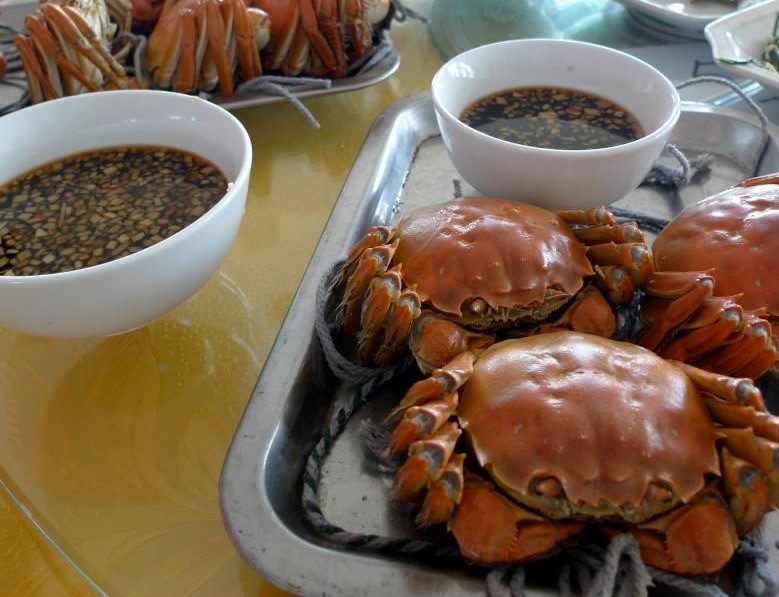
One other thing to note about Eastern Chinese cuisine is that the region is where soy sauce originates. This deliciously rich and multi-purpose condiment is omnipresent in the area’s cuisine and is particularly famed for its use in braised meats, which are flash-fried in soy sauce, ginger and sugar for an unrivalled flavour. Indeed, cooking in this manner leaves the meat an irresistible mauve colour, which is also a sign of good luck in China.
“Over the past decade, Ross Cameron has travelled extensively across Europe, Southeast Asia, North America, North Africa, and the post-Soviet space. As someone who has areal passion for these regions of the globe, he is able to offer an expert opinion that highlights the best off the beaten track destinations.”
Image details and licenses: Mantou: https://flic.kr/p/eg5ri9 (bionicgrrrl, CC BY-NC-ND 2.0), Bing: https://flic.kr/p/cvtG7G (Kirk K, CC BY-NC-ND 2.0), Jiaozi: https://flic.kr/p/yLqDX (Keso S, CC BY-NC-ND 2.0), Dazhaxie: https://flic.kr/p/aCdBb6 (Santo Chino, CC BY-NC 2.0), Huajiao: https://flic.kr/p/iBatT (Philippe Semanaz, CC BY-SA 2.0), Mapo Doufu: https://flic.kr/p/qmgh3t (Brian Yap, CC BY-NC 2.0), Chashaobao: https://flic.kr/p/vwYK2 (David Hsiao, CC BY-ND 2.0), Fresh chicken feet: https://flic.kr/p/cNsRGJ (kattebelletje, CC BY-NC 2.0)


